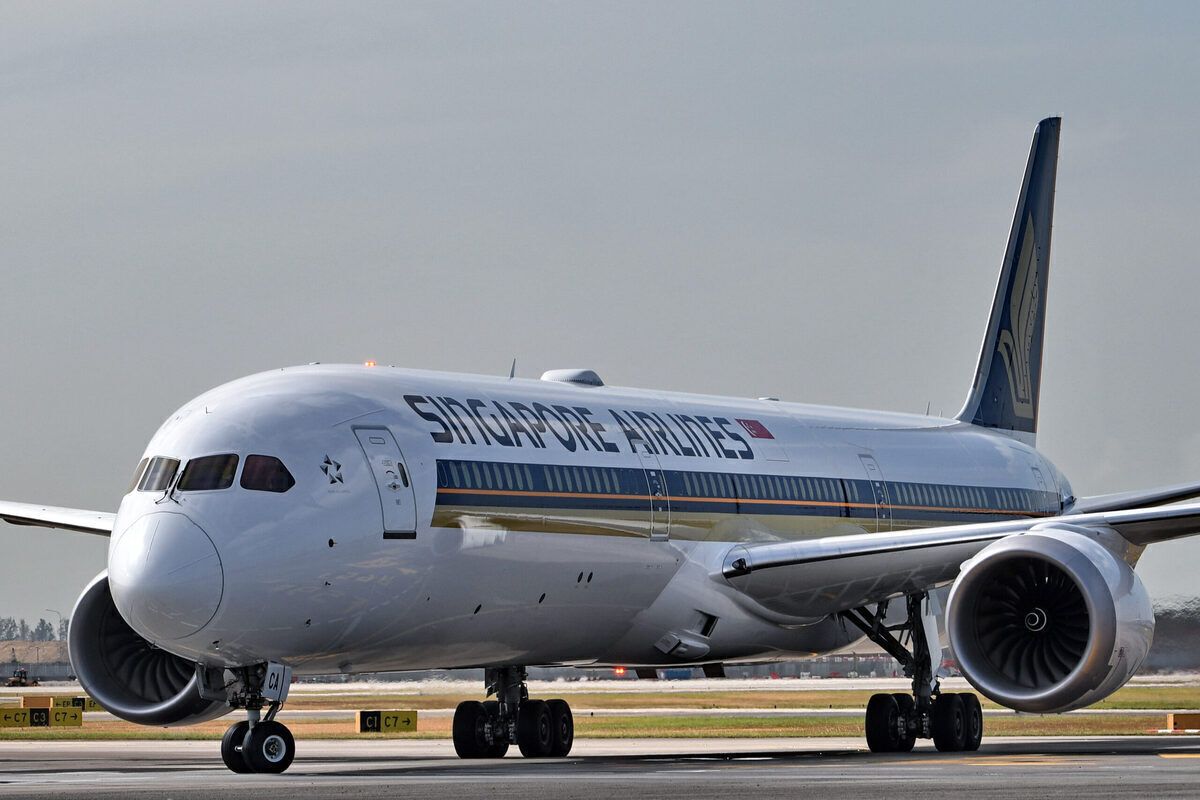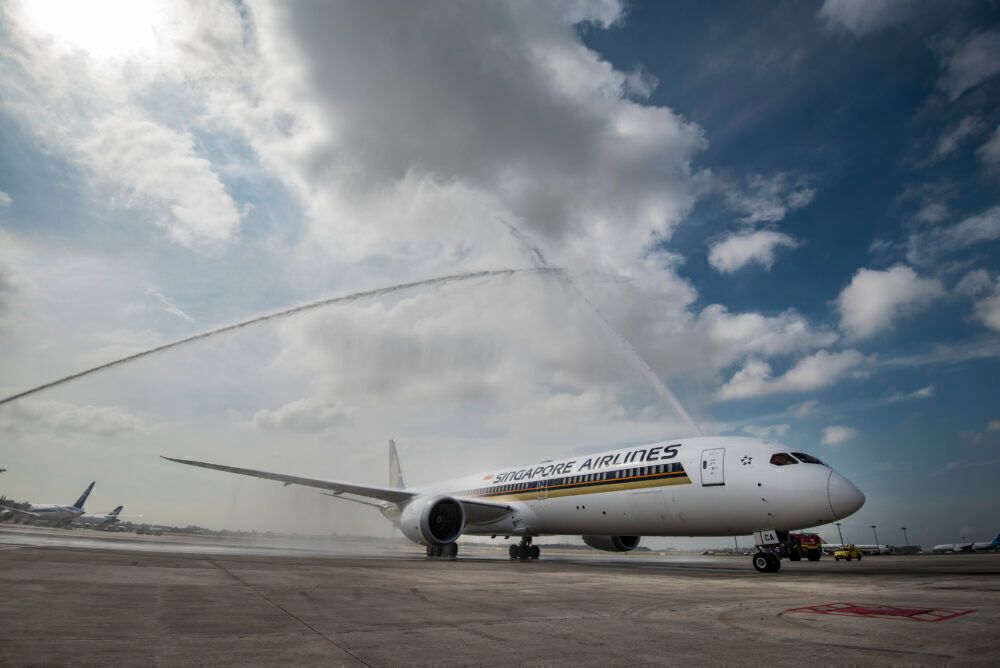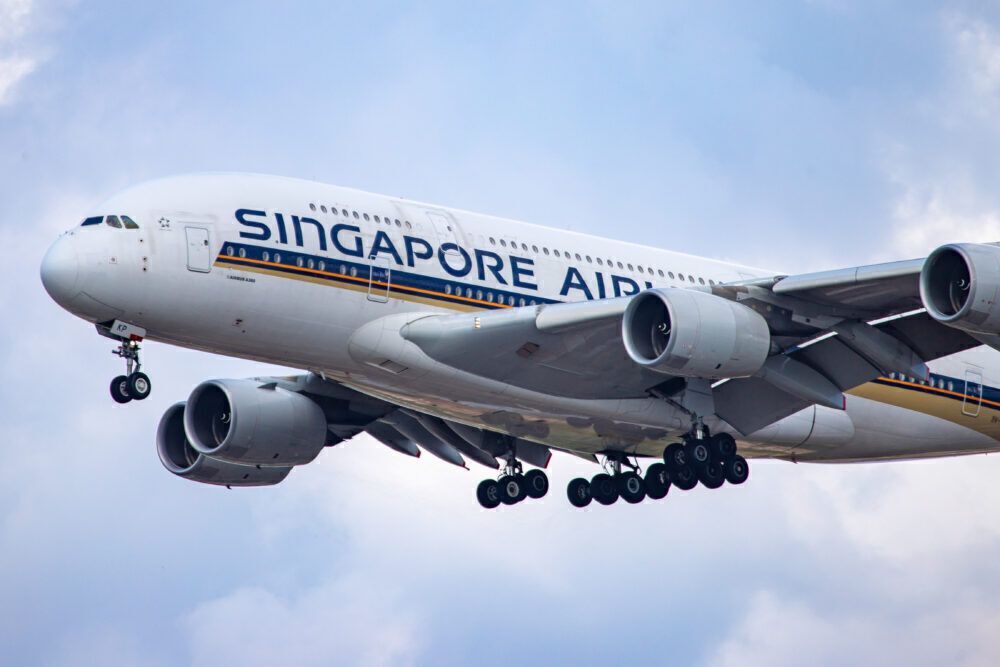Singapore Airlines has moved five of its 787-10 commitments to leasing firms. Along with the upsizing of some of its order to the 777-9, as well as a transfer of two to Scoot, this leaves SIA with just eight more 787-10s on order from Boeing.
Five orders shifted to lessors
Singapore Airlines is making a further adjustment to its commitment for the largest Dreamliner, the 787-10. Just weeks after recording a record $3.2 billion loss, the airline is looking to trim its capital expenditure commitments for the future. According to ch-aviation.com, the airline has transferred five of the 787-10s on order to an undisclosed lessor or lessors.
At the start of 2021, SIA had orders in for 29 of the 787-10 with Boeing. In February this year, the airline converted 14 of its 29 787-10 orders into commitments for the 777-9 of 11 units. Two more were transferred to its low-cost subsidiary Scoot, and downsized to the 787-9. With five more noted to be transferred to leasing companies, now, it has just eight.
These will join its existing fleet of 15 787-10s. However, no confirmed delivery dates are outlined for the remaining eight on order, so it’s not known when these will arrive with the airline. Nevertheless, it seems SIA still plans to take the five 787-10s, just on a leased basis rather than owned. In a statement to Mainly Miles, SIA said,
“Singapore Airlines has adjusted its purchase agreement with Boeing. Five B787-10s will now be delivered to SIA through a third party. This will help SIA to reduce its near-term capital expenditure, and defer the introduction of these aircraft to a period that is better aligned with the projected recovery trajectory for international air travel.”
Low-cost carrier Scoot already has 20 Dreamliners in its fleet, split evenly between the 787-8 and 787-9. To be delivered are three more 787-8s, as well as the two 787-9s transferred out of Singapore’s order.
Stay informed: Sign up for our daily and weekly aviation news digests.
Moving to a lease-heavy fleet
From an airline that once owned the majority of its fleet itself, Singapore Airlines is embracing the financial cushion that leasing companies can provide through undertaking sale and leaseback transactions. Last month, it was noted that the airline had undertaken sale and leaseback of 11 of its widebody aircraft, raising $1.5 billion in the process.
According to data from ch-aviation, Singapore Airlines now has a total of 32 aircraft operating on lease. These include three of its 787-10s, three 777-200ER, nine 737-800s, four of its A380s, five A350-900s, three A330-300s and all of its A320 family aircraft.
Lessors are spread across a variety of companies, including Altavair and Crianza, which lease its 787-10s and some of its A350s. Its A380s are leased to the airline by WealthCap, Lloyd Fonds and Hannover Leasing, while Merced Capital and Yamasa Sangyo take care of most of its narrowbody leases.
For airlines struggling with the pandemic downturn, lessors have proven to be of critical value. With access to capital markets that are otherwise difficult for airlines to harness, lessors are able to free up capital commitments for airlines without any loss of flying capacity. At the end of last year, aviation crossed the unprecedented threshold of more than 50% of the world’s fleet being leased.
For airlines like Singapore, this support is vital to their survival. But with fewer assets and large ongoing costs, the longer-term future sees a less robust airline coming out of the other side.



